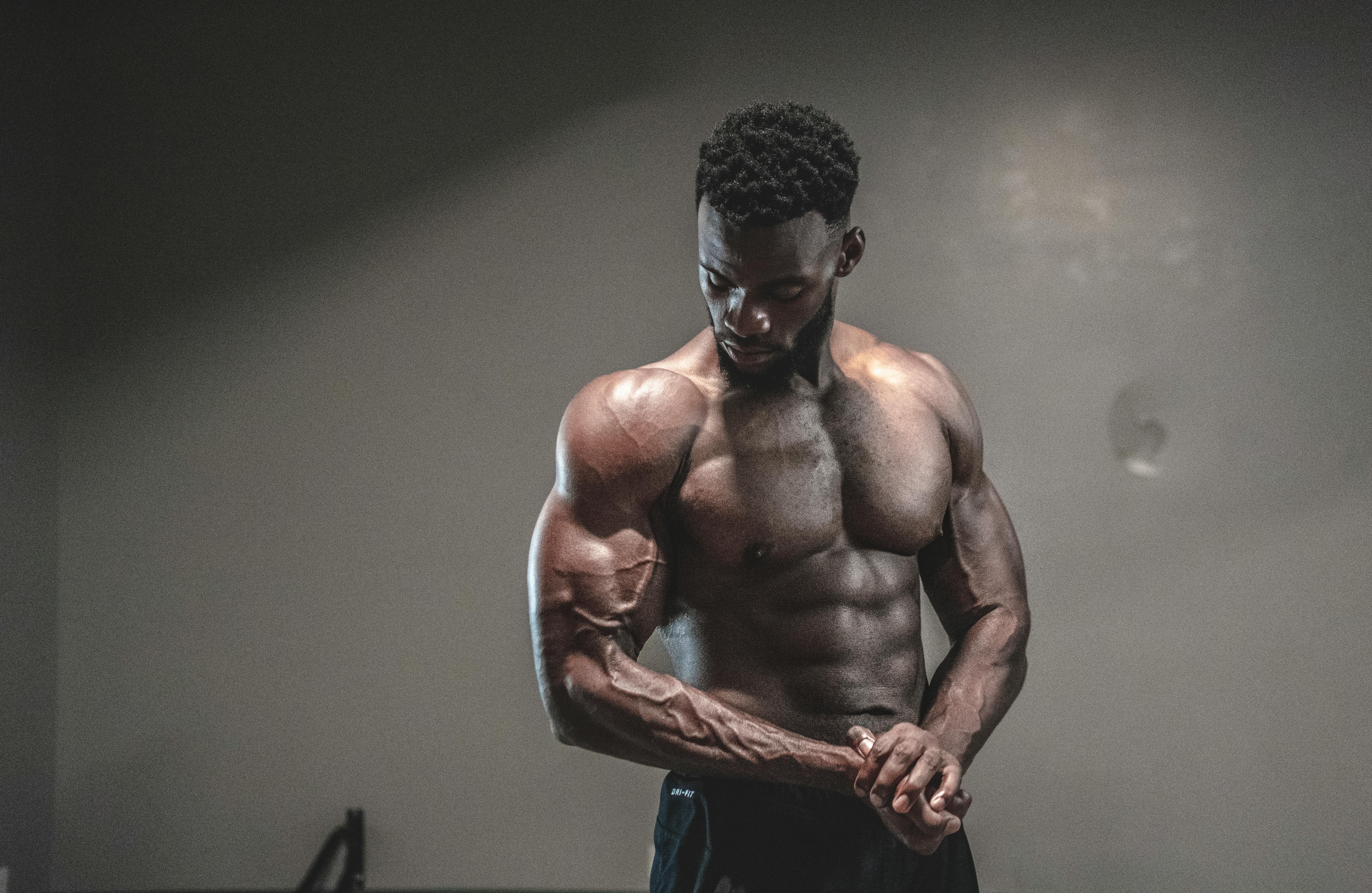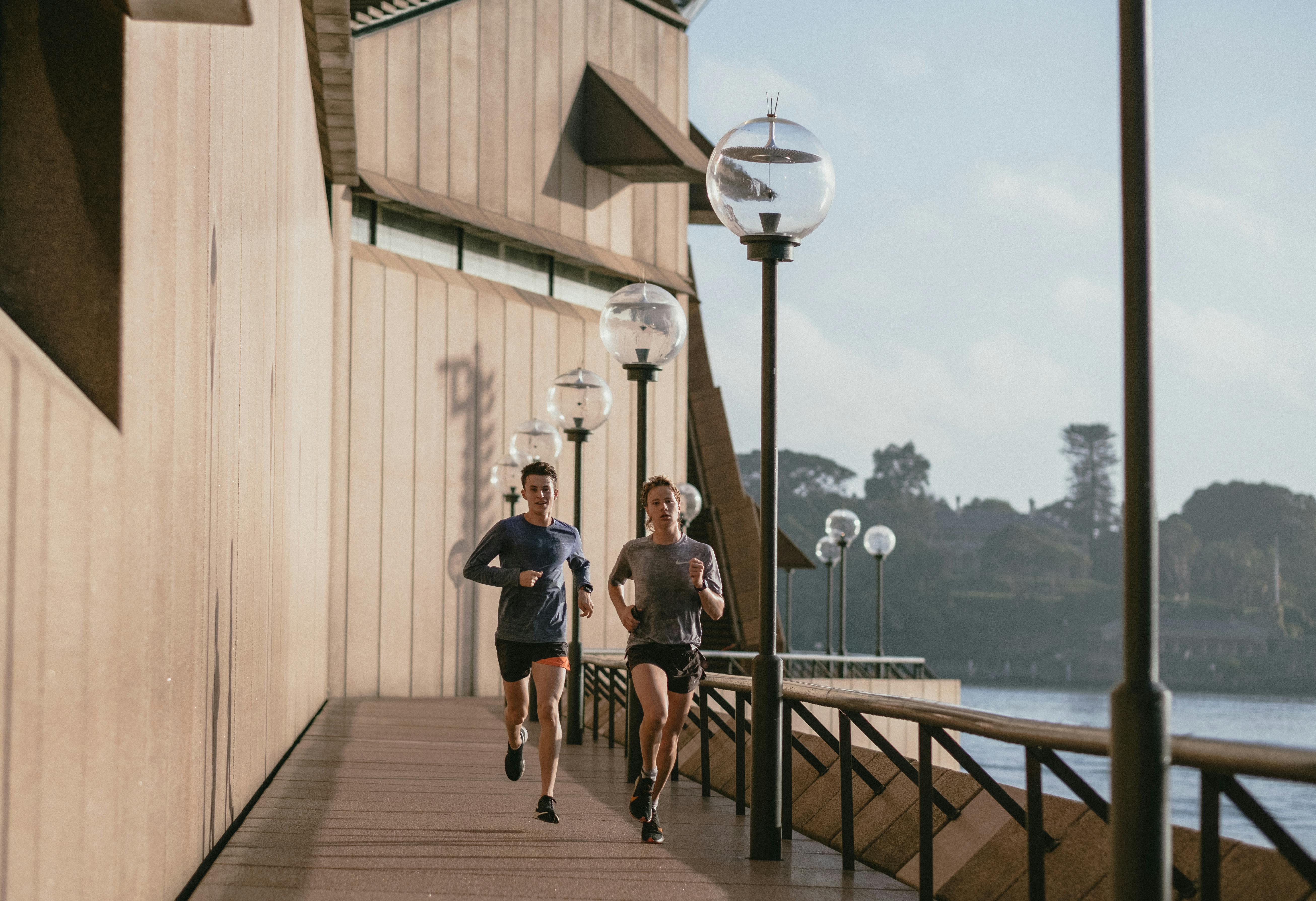How To Use Squat Machine At Gym
Are you ready to start using the squat machine at the gym but don’t know how? Don’t worry, I’ve got you covered! In this article, we’ll learn all about how to use the squat machine properly. We’ll cover everything from setting it up correctly to the right way to use it to make your leg muscles strong. So get ready to squat like a pro and get those legs in shape!

Understanding the Squat Machine
What is a Squat Machine?
A squat machine is a piece of gym equipment designed to help you perform squats, which is a popular exercise for strengthening your lower body. It provides support and stability while you perform the squat movement, making it suitable for beginners and experienced individuals alike.
Types of Squat Machines
There are different types of squat machines available at the gym. One common type is the plate-loaded squat machine, where you can add weight plates to increase resistance. Another type is the Smith machine squat, which uses a barbell attached to a guided track for added stability. Additionally, there are also squat machines with built-in resistance that use cables or hydraulics for resistance.
Benefits of Using a Squat Machine
Using a squat machine can offer several benefits. It helps in building strength in your legs, including your quadriceps, hamstrings, and glutes. Squat machines also help improve your overall lower body stability and balance, which can be beneficial for various activities and sports. Additionally, using a squat machine properly can reduce the risk of injury and provide support for individuals with limited mobility or those recovering from an injury.
Setting Up the Squat Machine
Adjusting the Seat Height
Before using the squat machine, it’s important to adjust the seat height to ensure proper form and comfort during the exercise. Most squat machines have an adjustable seat, allowing you to find the position that best suits your body. Make sure the seat is adjusted so that your thighs are parallel to the ground when you are in the lowered position of the squat.
Adjusting the Footplate Position
The footplate on the squat machine should be adjusted based on your height and comfort. The footplate is the platform where you place your feet during the exercise. Adjust it so that your feet are shoulder-width apart and positioned firmly on the footplate. This will provide stability and balance throughout the squat movement.
Setting the Weight
If you are using a plate-loaded squat machine, you will need to set the appropriate weight before starting your workout. Choose a weight that challenges you but still allows you to maintain proper form. Gradually increase the weight over time as you develop strength and confidence in your squatting abilities. Make sure the weight is securely attached to the machine to avoid any accidents or injuries.

Proper Body Positioning
Stance Width
When using a squat machine, it’s important to find the right stance width for your body. Your feet should be positioned shoulder-width apart or slightly wider. This width allows for proper distribution of weight and ensures stability throughout the squat. Experiment with different widths to find the position that feels most comfortable and natural for you.
Toe and Knee Alignment
To maintain proper form during the squat exercise, ensure that your toes and knees are aligned. Your toes should be pointing forward or slightly outward, depending on your preference and comfort. As you lower into the squat, avoid allowing your knees to cave inward. Keep them in line with your toes to prevent unnecessary strain on the knee joints.
Back Position
Maintaining a neutral and stable back position is crucial when using the squat machine. Avoid rounding or arching your lower back, as it can lead to discomfort or injury. Keep your back straight and engage your core muscles to provide stability and support. Imagine a straight line running from your head to your tailbone throughout the squat movement.
Grip and Hand Placement
Different squat machines may have variations in grip and hand placement. Some machines may have handles or grips to hold onto for added stability, while others may require you to position your hands on the machine’s frame. Follow the instructions provided by the specific squat machine you are using to determine the appropriate hand placement. Ensure a firm grip to maintain control and stability throughout the exercise.
Performing the Squat Exercise
Warm-up and Stretching
Before using the squat machine, it’s essential to warm up your muscles and perform some stretching exercises. A warm-up can include activities like jogging or cycling for a few minutes to increase blood flow and warm up your legs. Stretching exercises targeting your quadriceps, hamstrings, and calves can also help prepare your muscles for the squat exercise.
Starting Position
To start the squat exercise on the machine, position yourself with your back against the backrest and your feet firmly planted on the footplate. Ensure that the seat is adjusted to the appropriate height and your chosen weight is securely attached. Grip the handles or place your hands on the designated areas for stability.
Lowering Phase
Begin the squat movement by bending your knees and hips simultaneously, gradually lowering yourself towards the ground. Aim to lower until your thighs are parallel to the ground or slightly below, while maintaining proper form and control. Keep your back straight, chest up, and knees aligned with your toes throughout this phase of the movement.
Drive Back Up
Once you have reached the desired depth of your squat, push through your heels and drive your body back up to the starting position. Extend your knees and hips while maintaining control and stability. Focus on engaging the muscles in your legs and maintaining proper form throughout the movement.
Breathing Technique
Breathing properly during the squat exercise is important for maintaining stability and supporting your muscles. Inhale as you lower yourself into the squat, filling your lungs with air. Exhale as you drive back up to the starting position, releasing the air while exerting force. This breathing pattern helps stabilize your core and provides additional support during the movement.

Common Mistakes to Avoid
Leaning Too Far Forward
One common mistake when using a squat machine is leaning too far forward. This can put excessive strain on your lower back and compromise your form. Focus on keeping your chest up and your back straight throughout the entire squat movement. This will help distribute the weight evenly and target the correct muscles.
Knees Caving Inward
Allowing your knees to cave inward during the squat is another common mistake. This can strain your knee joints and increase the risk of injury. Remember to keep your knees aligned with your toes throughout the movement. Engage your glute and hip muscles to prevent your knees from collapsing inward.
Insufficient Depth
Failing to lower yourself to an adequate depth is a mistake that can limit the effectiveness of the squat exercise. Aim to lower yourself until your thighs are parallel to the ground or slightly below. This ensures that you engage the targeted muscles fully and maximize the benefits of the exercise.
Bouncing at the Bottom
Bouncing at the bottom of the squat can cause unnecessary strain on your joints and compromise your form. Instead, focus on maintaining control throughout the entire range of motion. Pause briefly at the bottom of the squat before driving back up to the starting position. This will help engage your muscles fully and prevent any bouncing or jerking movements.
Overarching the Lower Back
Overarching your lower back during the squat exercise can lead to discomfort or injury. Keep your back straight and maintain a neutral spine position throughout the movement. Avoid excessive arching of your lower back by engaging your core muscles and focusing on proper form.
Progressing Your Squat Machine Workout
Increasing Weight
As you become more comfortable and stronger with the squat machine exercise, you can gradually increase the amount of weight you use. This progressive overload helps challenge your muscles and promotes strength gains. Start with a weight that allows you to complete your desired number of repetitions with good form, and gradually increase the weight as you progress.
Varying Stance Width
To target different muscles and add variety to your workout, you can experiment with varying your stance width. Narrower stances can emphasize the quadriceps, while wider stances can engage the glutes and hamstrings to a greater extent. Play around with different widths to find what feels comfortable and targets the muscles you want to focus on.
Single-Leg Squats
Once you have developed sufficient strength and stability, you can incorporate single-leg squats into your squat machine workout. This variation challenges your balance and engages your stabilizer muscles. Start by placing one foot on the footplate and perform squats while maintaining control and proper form. Make sure to alternate between both legs for balanced development.
Adding Plyometrics
To further enhance the intensity of your squat machine workout, consider adding plyometric exercises. Plyometrics involve explosive movements, such as jumping squats or split jumps, combined with the squat motion. This can help improve power, explosiveness, and overall athletic performance.
Incorporating Time Under Tension
To further challenge your muscles, you can incorporate time under tension into your squat machine workout. This involves slowing down the lowering phase and focusing on controlled movements. By increasing the time spent on each repetition, you engage your muscles for a longer duration, promoting muscle growth and strength development.
Safety Tips and Precautions
Using a Spotter
If you are new to using the squat machine or attempting heavier weights, it is advisable to have a spotter present. A spotter can provide assistance and ensure your safety during the exercise. They can help keep you stable, guide your form, and assist if you are unable to complete a repetition. Always communicate with your spotter to establish clear signals and ensure a safe and effective workout.
Listening to Your Body
It’s important to listen to your body and pay attention to any discomfort or pain during the squat machine workout. If something feels off or causes pain, stop and assess the situation. Adjust your technique, reduce the weight, or consult a fitness professional if necessary. Pushing through pain or discomfort can lead to injuries, so prioritize your safety and well-being.
Avoiding Excessive Weight
Using excessively heavy weight on the squat machine can compromise your form and increase the risk of injury. Only choose a weight that challenges you while allowing you to maintain proper form throughout the exercise. Focus on gradually increasing the weight over time as your strength improves, rather than lifting the heaviest weight possible.
Knowing Your Limits
Understanding your limits and working within them is essential for a safe and effective squat machine workout. Don’t compare yourself to others or push yourself beyond what you are comfortable with. Start with lighter weights and gradually progress based on your individual strength and abilities. Remember, slow and steady progress is key to long-term success.
Proper Warm-up and Cool-down
Prior to using the squat machine, always warm up your muscles with light cardio exercises and perform stretching exercises. This helps prepare your muscles for the workout and reduces the risk of injury. After completing your squat machine workout, cool down with light stretching to promote muscle recovery and flexibility.
Muscles Targeted with Squat Machine
Quadriceps
The squat machine primarily targets the quadriceps, which are the muscles on the front of your thighs. As you lower and drive back up during the squat, these muscles work to extend your knees and provide stability. Regular squat machine workouts can help strengthen and tone your quadriceps.
Hamstrings
The hamstrings, located on the back of your thighs, also play a significant role in the squat machine exercise. They assist in hip extension and knee flexion during the lowering and driving phases of the squat. By incorporating the squat machine into your workout routine, you can effectively target and strengthen your hamstrings.
Glutes
Engaging your glute muscles is crucial for stability and power during the squat machine exercise. As you lower and drive back up, your gluteal muscles, specifically the gluteus maximus and gluteus medius, work to extend your hips. Targeting and strengthening these muscles can help improve your overall lower body strength and enhance aesthetic appearance.
Calves
The calf muscles, located at the back of your lower legs, are also engaged during the squat machine exercise. They work dynamically to stabilize your ankles and assist in the push-off phase of the squat. Regular use of the squat machine can help tone and strengthen your calf muscles.
Core Stabilizers
Maintaining proper form and stability during the squat machine exercise requires engagement of your core muscles. This includes muscles such as the rectus abdominis, obliques, and erector spinae. Your core muscles help stabilize your torso and prevent excessive tilting or arching of the spine during the squat movement.
Other Variations of Squat Exercises
Barbell Squat
In addition to the squat machine, the barbell squat is another popular variation of the squat exercise. It involves performing squats with a barbell placed on your upper back. The barbell squat requires more overall stability and control compared to using a squat machine, as you are responsible for balancing the weight throughout the movement.
Dumbbell Squat
The dumbbell squat is another variation that can be performed with dumbbells held at your sides. This variation requires you to stabilize the dumbbells while squatting, engaging additional muscles for balance and control. Dumbbell squats provide versatility by allowing you to increase or decrease the weight as needed.
Smith Machine Squat
Similar to the squat machine, the Smith machine squat involves using a guided barbell that moves along a vertical track. The barbell in the Smith machine provides stability and support, making it suitable for beginners or individuals with limited mobility. However, it does restrict the natural movement pattern of the squat compared to using free weights.
Hack Squat
The hack squat is another variation that targets the same muscle groups as the squat machine. It involves placing your back against a tilted platform and performing squats with a barbell on your shoulders. The hack squat machine provides stability and support, helping you maintain proper form and focus on engaging the targeted muscles.
Bulgarian Split Squat
The Bulgarian split squat is an advanced variation that focuses on unilateral leg strength and stability. It involves placing one foot behind you on an elevated surface, such as a bench, while the other foot remains planted on the ground. This variation challenges your lower body muscles individually, helping address any muscle imbalances or weaknesses.
Including Squat Machine in Your Fitness Routine
Determining Frequency
How often you use the squat machine depends on your fitness goals and overall workout routine. As a general guideline, aim for 2-3 sessions per week, allowing at least one day of rest in between. This provides sufficient time for your muscles to recover and adapt to the exercise.
Combining with Other Exercises
To create a well-rounded lower body workout, you can combine the squat machine with other exercises targeting the same or different muscle groups. Exercises such as lunges, leg press, deadlifts, or calf raises can complement the squat machine workout. Be mindful of not overworking the same muscles and allow for adequate rest between exercises.
Creating a Workout Plan
To ensure a balanced and effective workout routine, create a plan that incorporates the squat machine and other exercises. Consider your fitness goals, available time, and overall capabilities when designing your plan. Start with a warm-up, then perform your squat machine sets followed by additional exercises. End your workout with a proper cool-down and stretching routine.
Tracking Your Progress
Keeping track of your progress is essential for monitoring your strength gains and ensuring you are continuously challenging yourself. Record the weight used, sets and repetitions performed, and any other relevant notes during your squat machine workouts. This allows you to track your progress over time and make adjustments to your routine as needed.
Challenges and Adjustments
As you become more comfortable and experienced with the squat machine, consider introducing new challenges and adjustments to keep your workouts engaging and effective. This can include increasing resistance, incorporating advanced variations, or adjusting your repetitions and sets. By continuously progressing and challenging your muscles, you’ll continue to see improvements in your strength and fitness levels.
Using proper technique, maintaining safety precautions, and gradually progressing your squat machine workouts can help you optimize your lower body strength and muscle development. Remember to always listen to your body, prioritize safety, and consult a fitness professional if you have any concerns or questions. Enjoy your squat machine workouts and the benefits they bring to your overall fitness journey!

Pingback: Squat Machine Gym How To Use
Pingback: Which Gym Machine Burns The Most Calories